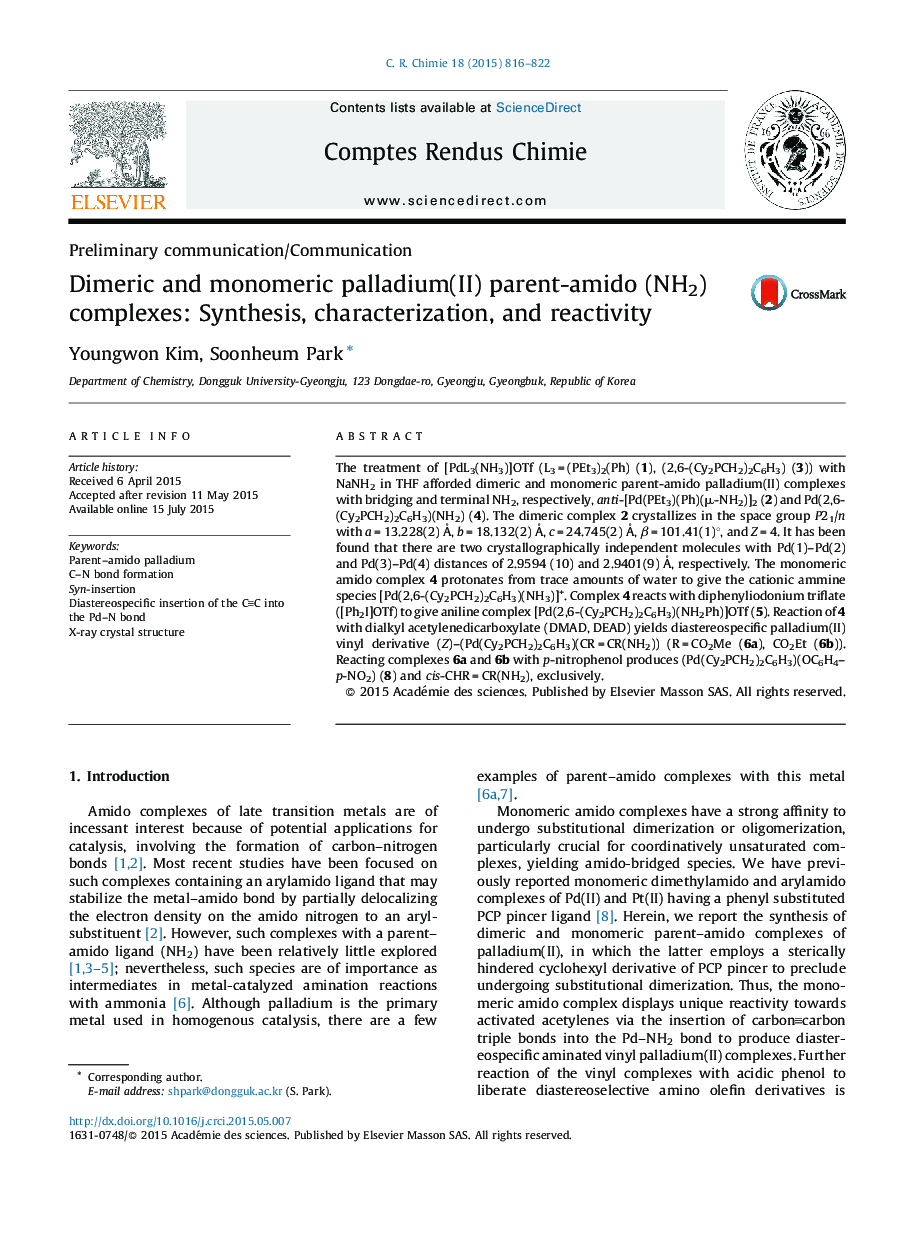| کد مقاله | کد نشریه | سال انتشار | مقاله انگلیسی | نسخه تمام متن |
|---|---|---|---|---|
| 170490 | 458397 | 2015 | 7 صفحه PDF | دانلود رایگان |

The treatment of [PdL3(NH3)]OTf (L3 = (PEt3)2(Ph) (1), (2,6-(Cy2PCH2)2C6H3) (3)) with NaNH2 in THF afforded dimeric and monomeric parent-amido palladium(II) complexes with bridging and terminal NH2, respectively, anti-[Pd(PEt3)(Ph)(μ-NH2)]2 (2) and Pd(2,6-(Cy2PCH2)2C6H3)(NH2) (4). The dimeric complex 2 crystallizes in the space group P21/n with a = 13.228(2) Å, b = 18.132(2) Å, c = 24.745(2) Å, β = 101.41(1)°, and Z = 4. It has been found that there are two crystallographically independent molecules with Pd(1)–Pd(2) and Pd(3)–Pd(4) distances of 2.9594 (10) and 2.9401(9) Å, respectively. The monomeric amido complex 4 protonates from trace amounts of water to give the cationic ammine species [Pd(2,6-(Cy2PCH2)2C6H3)(NH3)]+. Complex 4 reacts with diphenyliodonium triflate ([Ph2I]OTf) to give aniline complex [Pd(2,6-(Cy2PCH2)2C6H3)(NH2Ph)]OTf (5). Reaction of 4 with dialkyl acetylenedicarboxylate (DMAD, DEAD) yields diastereospecific palladium(II) vinyl derivative (Z)–(Pd(Cy2PCH2)2C6H3)(CR = CR(NH2)) (R = CO2Me (6a), CO2Et (6b)). Reacting complexes 6a and 6b with p-nitrophenol produces (Pd(Cy2PCH2)2C6H3)(OC6H4–p-NO2) (8) and cis-CHR = CR(NH2), exclusively.
Journal: Comptes Rendus Chimie - Volume 18, Issue 8, August 2015, Pages 816–822